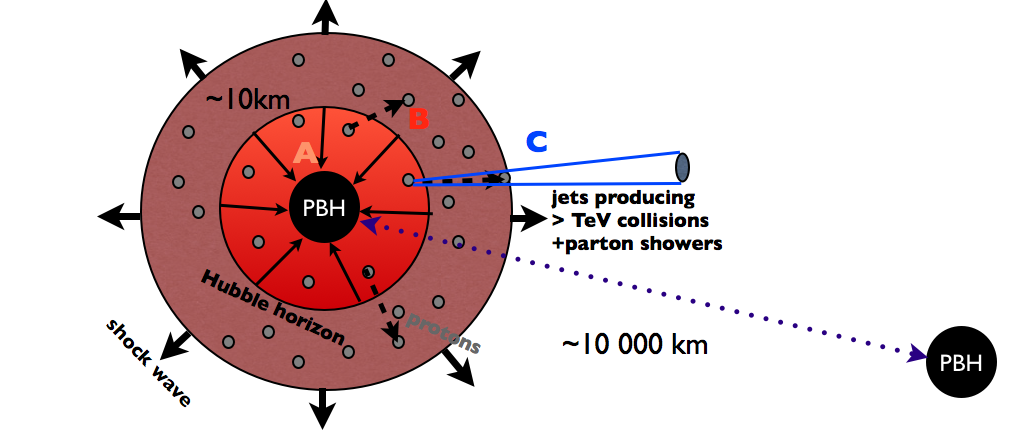Primordial black holes could not only explain the dark matter, but also the origin of the ordinary matter in the Universe. Sébastien, Bernard Carr and Juan García-Bellido propose a new baryogenesis scenario in Refs.[1] and [2].
When density fluctuations collapse gravitationally in the early Universe to form primordial black holes, all the conditions are met to produce the observed baryon asymmetry around the collapsing regions. Moreover, this scenario naturally explains why the Dark Matter and Baryons have similar densities. No parameter tuning is required if these density fluctuations are due to the stochastic quantum fluctuations of a light spectator field during inflation.

The above figure is a qualitative representation of the three steps in our scenario:
-
(A) Gravitational collapse to a PBH of the curvature fluctuation at horizon re-entry.
-
(B) Sphaleron transition in hot spot around the PBH, producing baryons locally through electroweak baryogenesis.
-
(C) Propagation of baryons to rest of Universe through jets, resulting in the observed Baryon Asymmetry of the Universe.